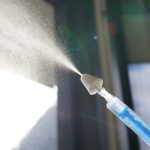Researchers across the country are noticing an increased presence of life-threatening xylazine, an animal tranquilizer, that is frequently showing up in the nation’s illicit opioid supply. Despite its rise, many people who use drugs are unaware of its presence, and many health care providers have not heard of xylazine or how to treat its unique complications. Researchers at the University of Pittsburgh are working to educate the public and clinicians about this adulterant and its harmful effects.
“Harm reduction advocates and people who use drugs in Pennsylvania first noticed a tranquilizer in the local drug supply about 10 years ago. However, it’s only in the last couple of years that xylazine has been detected in the national drug supply, often in conjunction with opioids like fentanyl,” explained Dr. Raagini Jawa, assistant professor of medicine at the University of Pittsburgh. “While xylazine has been used by veterinarians for decades as a procedural sedative, the Food and Drug Administration never approved it for use in humans because of its hazardous effects.”

Dr. Raagini Jawa
Even though xylazine is not a new drug, most people who use substances haven’t heard of it and don’t know they may be exposed to it. The hallmark complications of xylazine exposure include prolonged periods of sedation and deep, ulcer-like wounds that require intensive wound care. If not cared for correctly, the wounds can lead to severe bacterial infections, ultimately resulting in amputations or death.
“I’ve cared for patients with xylazine-associated wounds who say they’ve never used xylazine, but the reality is they just didn’t know it was in their supply,” Jawa said. “We don’t fully understand yet how these wounds develop and progress, but they often have areas of necrosis which makes them more difficult to treat. Part of my team’s research is centered on working with harm reduction organizations to determine behavioral risk factors for developing these wounds. We’re also gathering best practices from field wound specialists to train health care providers on how to triage and provide community-based, low-barrier wound care for these patients.”
Jawa and her team, in collaboration with Grayken Center for Addiction at Boston Medical Center, have been running a series of virtual seminars about xylazine geared toward caregivers of all kinds, covering best practices for care and common misconceptions about the drug. One misunderstanding is that all xylazine-associated wounds are infected and require long courses of antibiotics. While that may be appropriate in some cases, these kinds of chronic wounds need to be treated more like burns, Jawa said. Keeping the affected area clean, the wound bed moist and providing appropriate dressing are often the most effective strategies to help them heal.
The strong sedative effect of xylazine and the lack of public awareness of this adulterant can also make treating overdoses more complicated. While naloxone nasal sprays are effective in reversing opioid overdoses, they do not have an impact on the tranquilizing effects of xylazine. This means that after naloxone is administered and the patient’s breathing is restored, the person may not immediately wake up, even though the spray is working. “If you think a person is having an overdose, remember that xylazine is often mixed with opioids, so administering naloxone is still the first thing you should do along with calling for help,” Jawa said. “If the patient is breathing but doesn’t wake up, it’s important to ensure their breathing is adequate and provide rescue breaths as needed until help arrives.”
Until further research can be done on how to best treat and prevent these complications, the focus should be on expansion of harm reduction strategies and education, Jawa said.
“Access to harm reduction resources like wound care kits, sterile drug use equipment and education are key here,” said Jawa. “If we can give our patients the tools they need to better care for themselves and provide physicians with evidenced-based training, we can save lives and prevent downstream harms associated with xylazine and other adulterants.”









